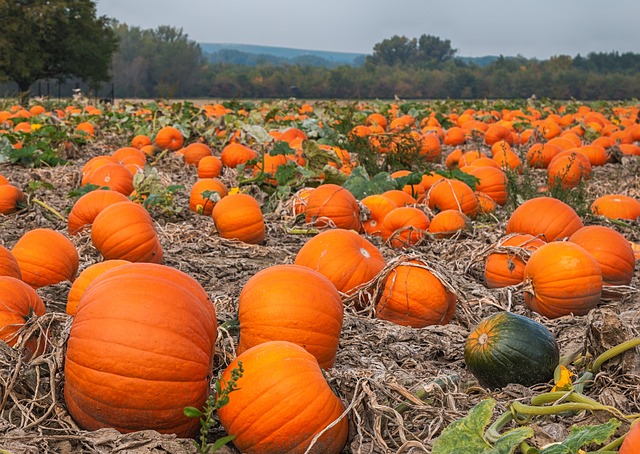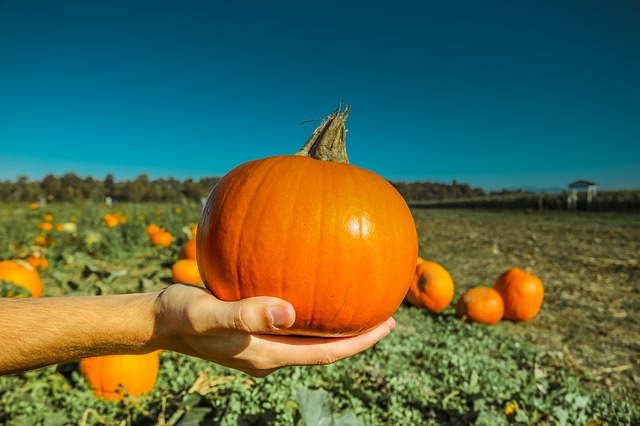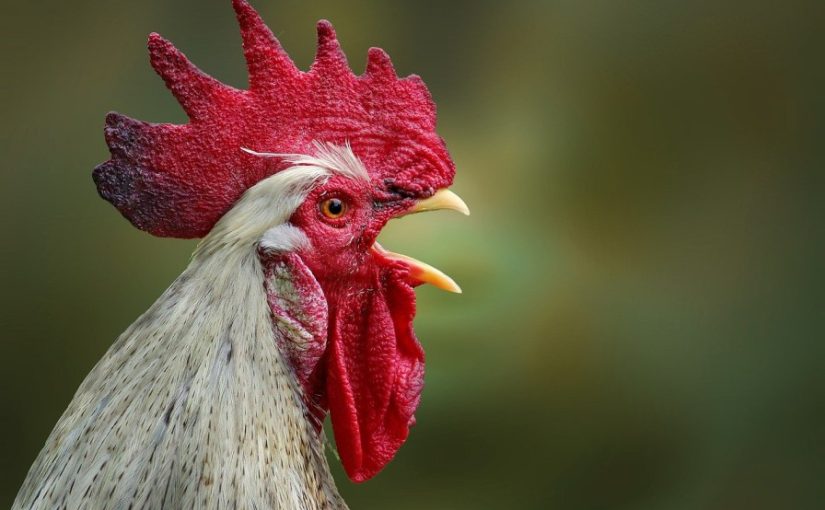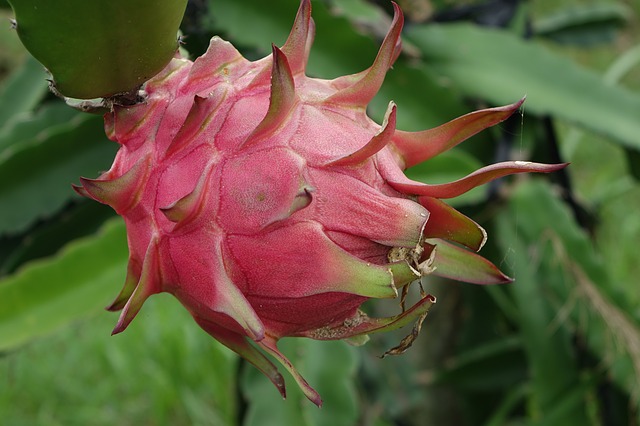There is no fall without pumpkins. Be it big, mini, orange, white, carved, and most importantly pie or any other kind, almost all love pumpkins. Pumpkin farming is done mostly over a large patch of land, for better quality and size. Pumpkins are used in cooking as well as in carving during Halloween for decorations. Several pumpkin farms sell well in other seasons. Farming is easy to maintain if you have sufficient space. These crops will flourish just about anywhere with the right care.
Steps to Follow for the Best Fruit
Pre planting preparation
Pre-planning is important even if you are growing pumpkins as they are very tender. Pumpkin plants grow as a vine, which can easily reach 20 to 30 feet long in the course of its growing season.
Also Read: Sweet Potato Farming Information Guide
Pre-plan the time to plant seeds:
Pumpkins do require a long growing season. Generally, it takes 75 to 100 frost-free days to grow. So, it is advised to carry pumpkin cultivation by late May in Northern locations and by early July in the extreme Southern places. Plant the seeds after the frost has passed. If you are planning for a fall harvest, then plant them in late spring or early summer. Again, if pumpkins are planted too early, they may soften and rot.
Selecting a site to plant seeds:
Pumpkins prefer full sun. Pick a site with full sunlight to light shade. A spot under a tree or in the shadow of a building would not serve your purpose. Pumpkins grow annually on heavy grown vines. The site should also have lots of space for sprawling vines. An open space of 25 to 30 feet will serve your purpose of pumpkin cultivation. A Pumpkin farm does not take the whole yard. Besides, it should also have a good drainage system. The site should not have standing water after heavy rains as well as a shelter from cold wind.
Preparing the soil to plant seeds:
Pumpkin seeds do not germinate if your soil is cold. Beware; the seedlings are destroyed by frost. They prefer very rich soil, which is not too soggy. Checking the soil temperature is also very important. The soil temperature should be at least 70 degrees Fahrenheit as pumpkin is a tender crop. You need to wait until the soil is warmed, naturally. Otherwise, pumpkins will start to rot. An extra boost for your pumpkin farming is to prepare your soil beforehand. Digging holes to plant the pumpkin seeds and filling them with a mixture of compost one week before planting seeds is advisable.
Choosing the seeds:
You can choose your yield from three different varieties of pumpkins. Here are three varieties of pumpkins for you to grow in your backyard: pie-pumpkins for cooking. Large decorative pumpkins to carve out for Halloween.Mini pumpkins for decorating purposes again.
Planting the seeds
Pumpkins grow well when the seeds are planted in the ground directly.
Plant the seeds in wide-spaced rows:
Plant the pumpkin seeds in rows. They will creep along with the vines. Depending on the variety of your pumpkin seeds space the rows 6 to 10 feet apart. Mini pumpkins will take small space to grow while the larger ones need more space. The Bush-type variety of pumpkins needs 8feet space in all directions to grow fully. They grow on shorter vines.
The perfect depth to plant the seeds:
The most important step towards pumpkin cultivation is to build the pumpkin-hills. The pumpkin-hill is a small hill built on the ground. Accumulate the soil where you want to plant the seed then give it a shape of a hill using your palms. The hill keeps the soil warmer by allowing the sun to heat it faster. It improves the cultivation by providing natural drainage. Plant the seeds 1-2 inches deep in the hills. You can plant 2 or 3 seeds within a few inches from one another.
Covering the seeds:
After you have properly planted, your seeds now cover them up with compost. The compost mixture prevents the growth of weeds and nourishes the seeds planted. A thin layer of compost mixture in the areas where you have planted your seeds is enough to nurture your seeds properly.
Taking care of the plants
Taking the right care of your seeds will do the magic for your pumpkin farming. With proper care, the plants will sprout within about a week.
- Watering:
Every plant needs watering, and pumpkin is no different. When the soil temperature is low, it is the right time to water the pumpkin plants. Pumpkins are very sensitive to moisture. Over moisture will injure the plants. Adding more water to wet soil will do no good for farming. Rather adding less water to dry soil is ideal. Let the water soak deep into the soil before adding further water. As the roots grow deep into the soil, the water must reach the plants deeply.
In pumpkin cultivation, you need to water deep down at least 6 inches to moisten the soil. Water only the stem of the plant. Avoid watering the leaves. Wet leaves are the ideal place for fungus to grow. Powdery mildew is one of them. It causes the plant to die by bewildering the leaves of the plants. Watering in the sun is more preferable than in the night. Use a garden hose equipped with a mist ling nozzle for watering the plant. Decrease the amount of water as the pumpkins grow and turn orange in color.
- Pollinating the blossoms:
The first thing that comes to anyone’s mind is how do pumpkins grow. Pumpkins depend on bees to pollinate their blossoms. If you do not see active bees in your gardens, self-pollinate using your hands. You must get your female flowers fertilized to get the pumpkins.
Must Read: Growing the Avocado – The Healthiest food
The female flowers show up later with a swollen base below the petals, which helps you to identify them. Male flowers show up first. They are thin and straight flowers. Self-pollination includes transferring pollen from the male flower to the female flower. An artist’s brush will help you in this process.
Wear gloves on your hands. Brush the male flower with the artist’s brush to collect the pollen from it. Going to the female flowers, brush only the center of the female flower to allow the pollen to settle on them. Be gentle with the blossoms as they are very delicate. In the mornings, the female flowers remain open for half a day.
After that, they shut themselves up and do not open until the next morning. If you accurately do the self-pollination then you will surely get the best results out of them. Too many fertilizers will reduce the rate of pollination. It will negatively influence your fruit set.
- Fertilizing:
Adding fertilizers to your pumpkin farm encourages the growth of the plants. When the plants first sprout add the fertilizer to keep them healthy. Go to a local nursery and choose the fertilizer accordingly from them. Side dressing is also important. It means spreading the fertilizer around the plants close enough for their roots to eat-up.it is ideal to side-dress the vines once a week after the blossoms start appearing.
- Controlling weeds and pests:
To make most out of your pumpkin cultivation, make sure you control the weeds and pests growing around them. Monitor your pumpkin farm throughout its growing process to have control over them. Weed the patch often to prevent the growth of them around your pumpkin plants.
Planning a weed a few times a week is good for your farming. Conserving your soil moisture by cleaning the weeds is also important. Beetles grow on the plant leaves and eat the plant tissues. Check the leaves to remove them. Scrape them off the whole plants twice a week to save the plants. Aphids threaten garden plants a lot.
They mostly grow on the underside of the leaves of the plant. Taking care of a pumpkin farm is highly recommended, otherwise, they will kill your plants. Spraying water on them will do the work. But, spray the water in the morning so the leaves get enough time to dry under the sun.
Squash bugs are another variety of pests that grow especially later in summer. Poor light will enhance the growth of pests. Go to your local nursery and ask about organic pesticides if necessary.
Harvesting the pumpkins

Check the pumpkins:
Pumpkins typically take 95 to 120 days to fully mature after they are planted. Check to see whether they are ready to harvest or not. They should have a bright orange color. Their shell should be hard. Do not harvest the pumpkins if they are still soft. Allow them to become hard before cutting them from their plants. Their stems will remain soft. But, the vine will start drying out itself. They will also start to wither on their own.
Cut the stems:
Do not break the stems; it will destroy your pumpkins. Cut the pumpkins from the stems with the help of a pair of shears to keep them intact. While you cut the stem make sure to leave the stem a few inches long. A liberal amount of stem (3 to 4 inches) will increase the life of the pumpkins never after cutting.
Store the pumpkins:
After cutting the pumpkins from the plants keep them in a cool and dry place. Wet and moisture places can make them rot. Keeping them away from humidity, damp, and direct sunlight is advisable. They do not need any kind of refrigeration also. Pumpkins can be kept for many months after harvesting. To avoid molds and fungi, a little spray of mild chlorine before storage does the work perfectly. Maintain a storage temperature of around 55 degrees Fahrenheit.
Conclusion
Just remember to water well and often. Watch the plants often for pests. Clean the ground and make it weed-free. Fertilize regularly. Last but not least is to watch the fruit grow bigger and bigger! Handle the pumpkins gently or they may bruise. Follow the above-given steps to make the most out of your cultivation.




